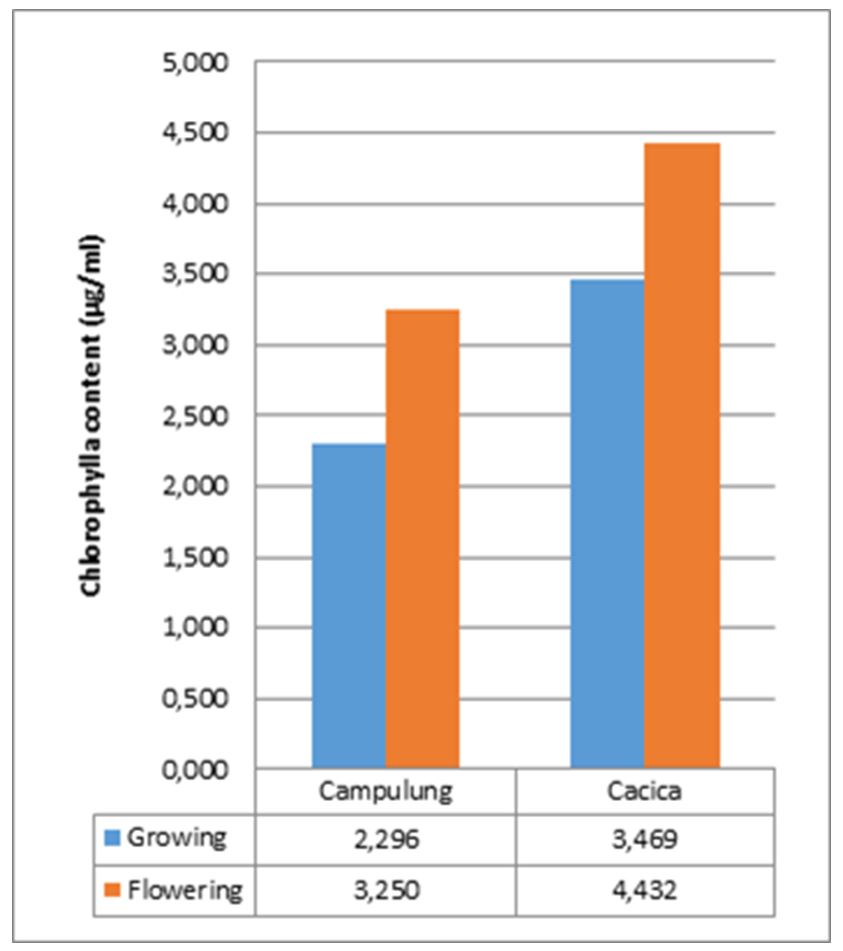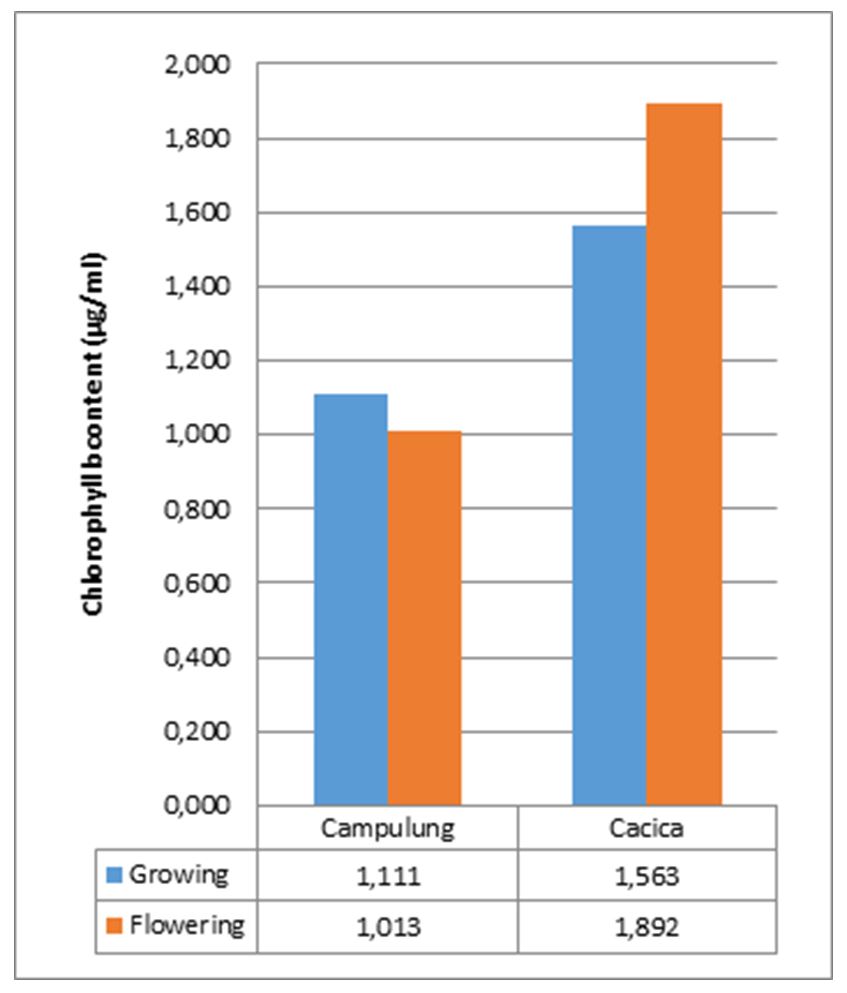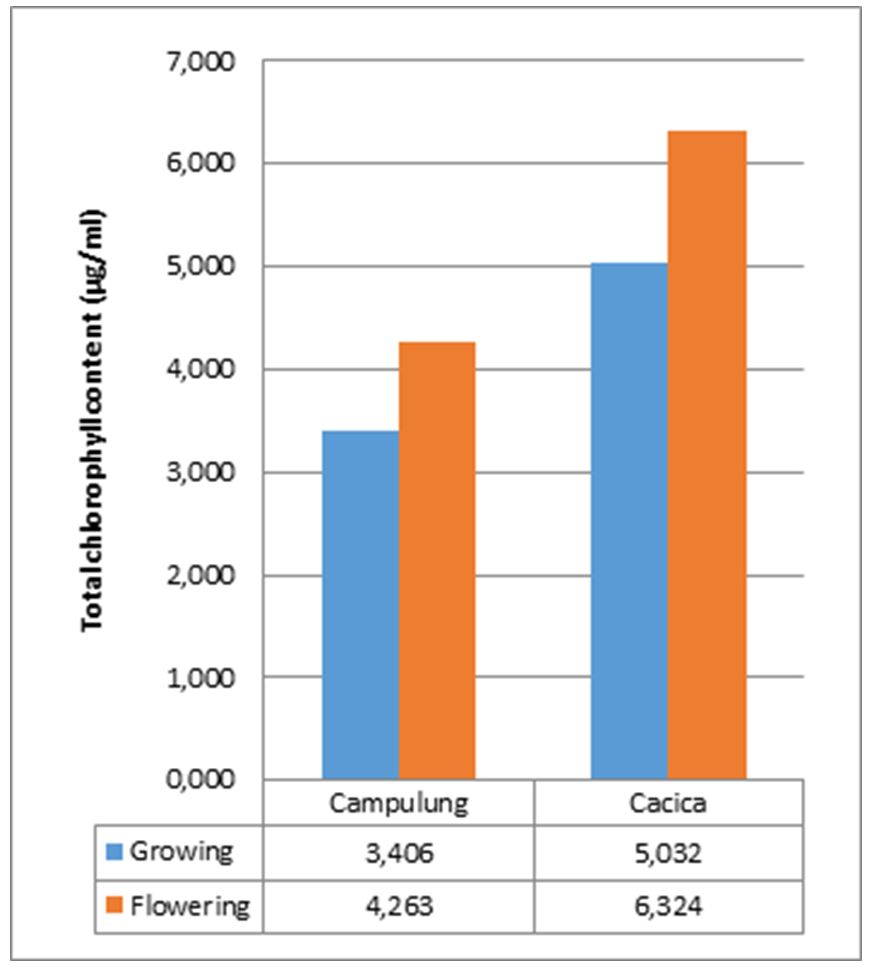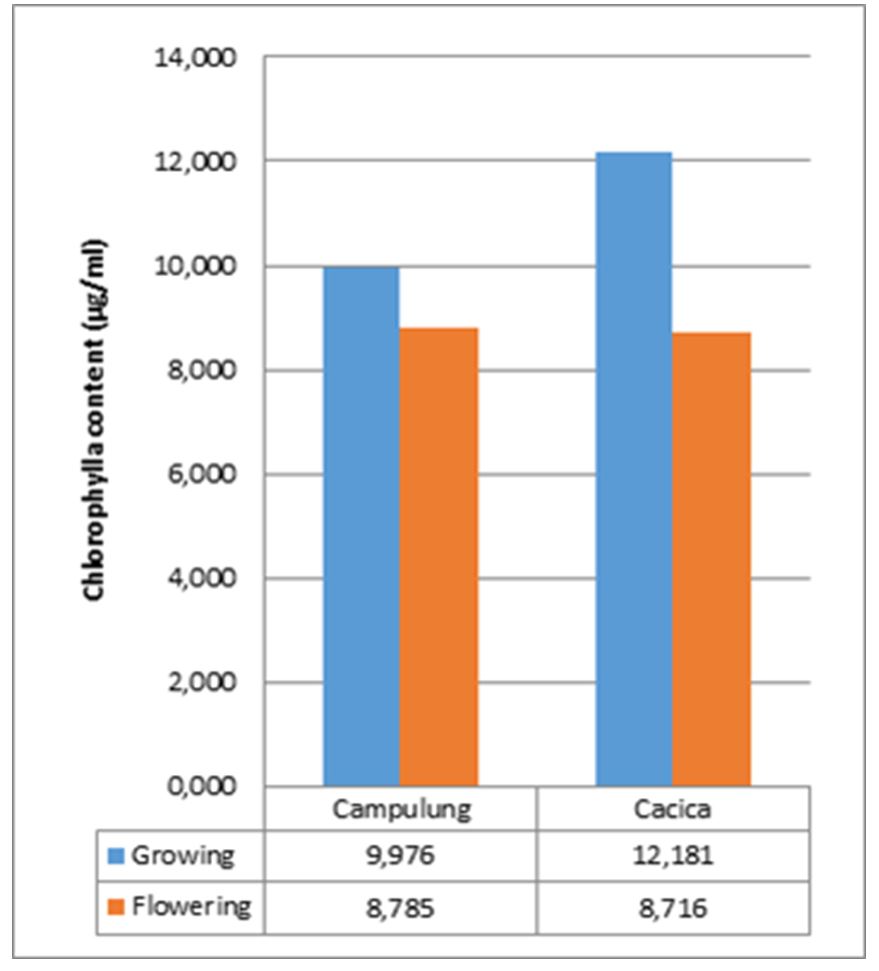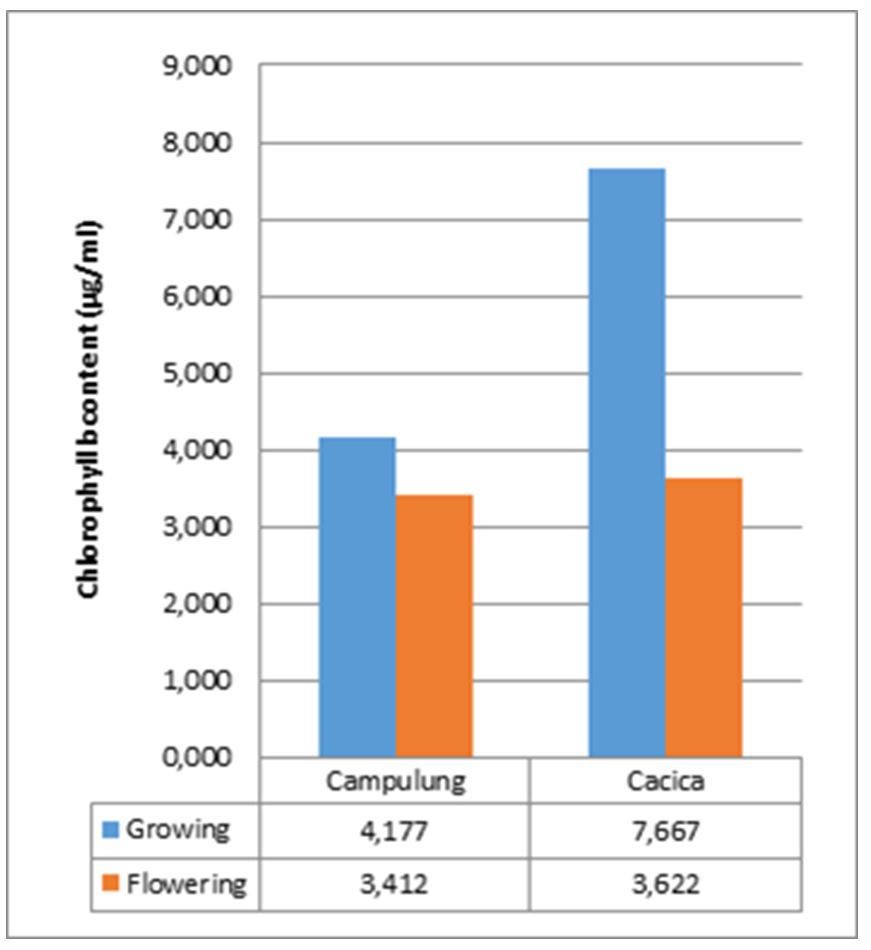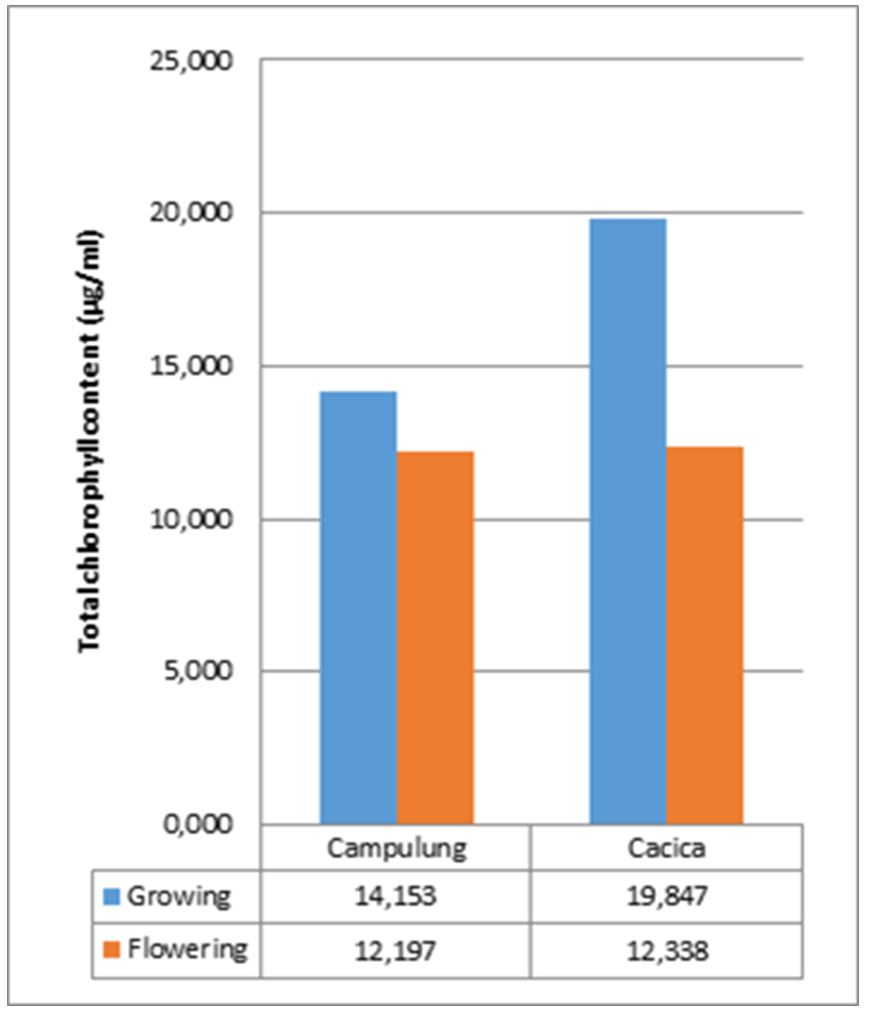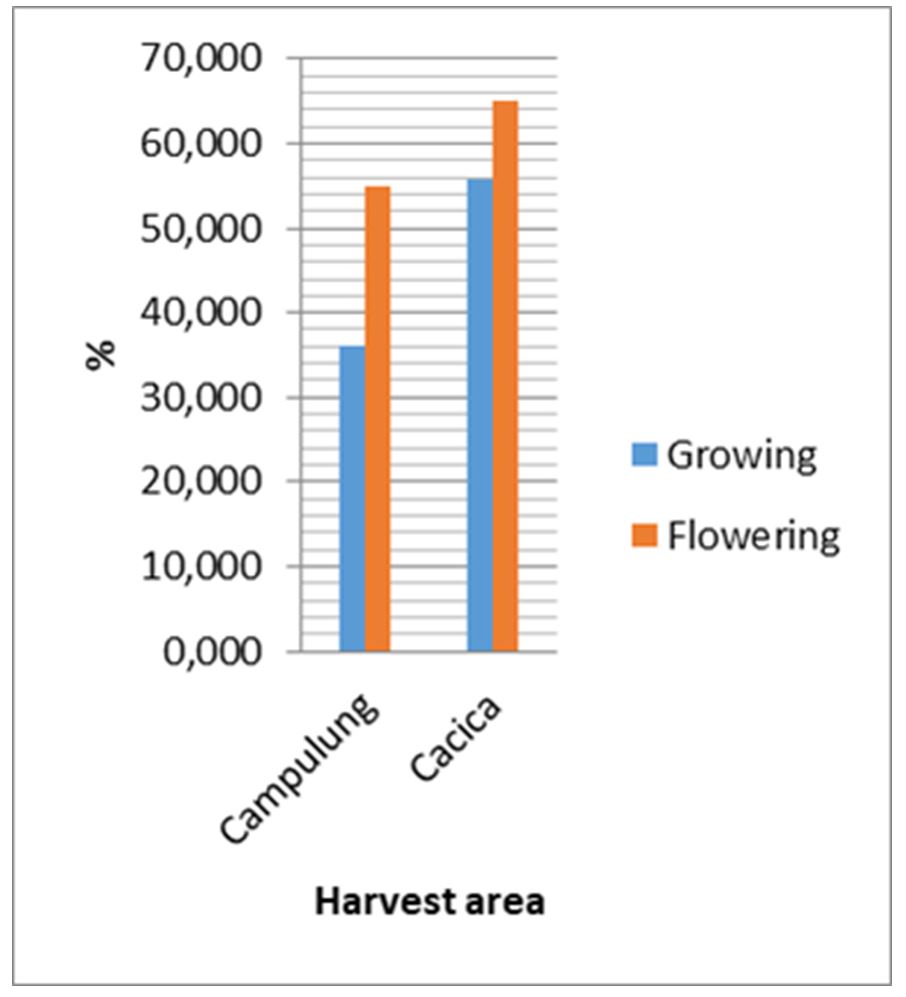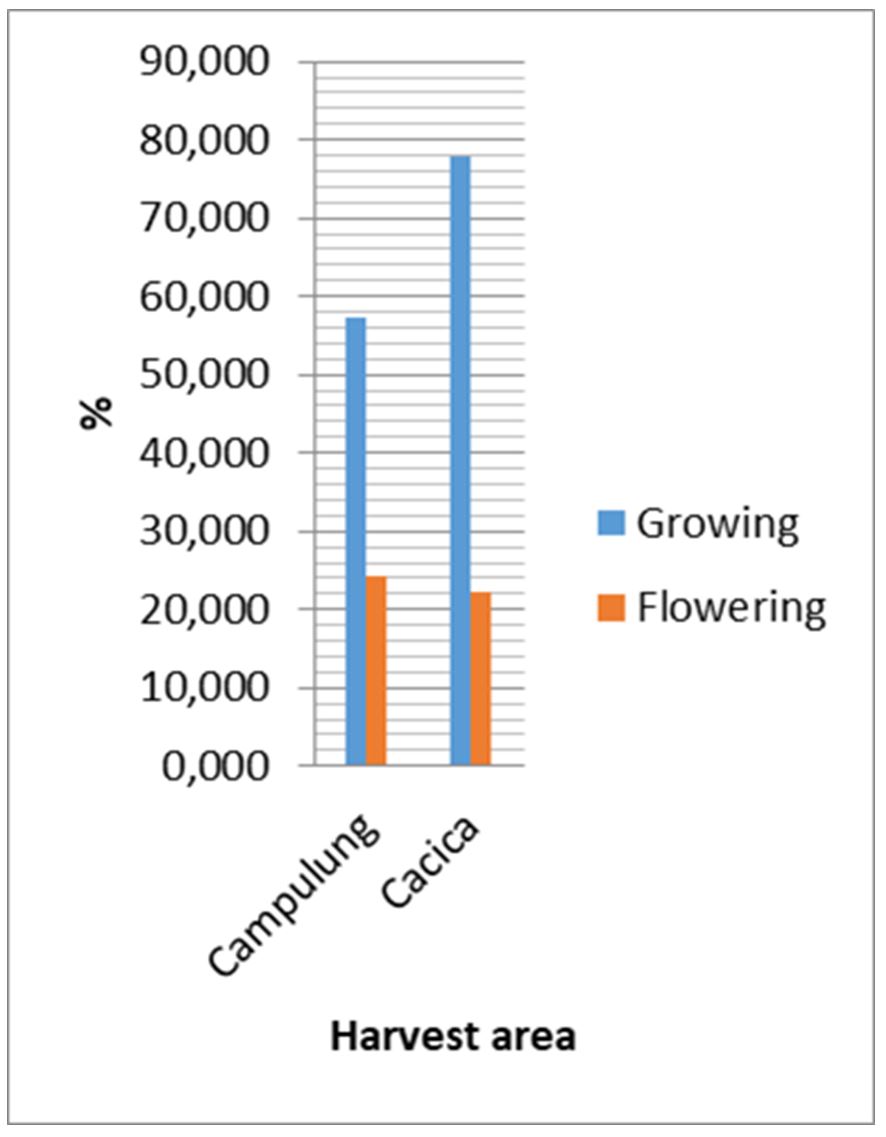S. Buhăianu, Doina Carmen Jităreanu
ABSTRACT. Abies and Nepeta species are well known for their traditional use in traditional medicine from Bukovina, Romania, and other parts from the world. However, too few studies present the connection between phenophase, chloro-phyll content and antioxidant activity of extracts obtained from medicinal plants. Phenophases, like stages from vital cycle of plants, involve seasonal and evolu-tionary changes, including chlorophyll content of the leaves. With these changes, there are also changes in the oxidative activity of the extracts obtained from the studied plants. The chlorophyll was extracted with acetone, being quanti-tatively measured using the spectro-photometer. Antioxidant activity was determined by the DPPH method. This method is one from the most popular ways to measure the antioxidant capacity of a substance. The studied species are Abies alba and Nepeta pannonica. Plants were harvested from different locations of Bukovina, from areas of Câmpulung Moldovenesc and Cacica localities, Suceava county, Romania. Chosen phenophases were growing and flowering. The DPPH method implies making some extracts with organic solvents from collected plants, in this case being ace-tone. Using 2,2-diphenyl-1-picrylhydrazil reactive, there was determined the antioxidant capacity of mentioned extracts. There were observed variations of this depending of phenophase and collecting areas, being closely related to total chlorophyll content. The both species have behaved differently and obtained results can be used to determine the optimal harvest moments of these plants.
Keywords: growing; flowering; medicinal plants; spectrophotometer
View full article (HTML)
The relationship between chlorophyll content and antioxidant activity of Abies Alba and Nepeta Pannonica extracts according to phenophase and harvesting area
S. Buhăianu1,*, Doina Carmen Jităreanu1
1The University of Agricultural Sciences and Veterinary Medicine Iaşi, Romania
*E-mail: sergiu_buhaianu@yahoo.com
Received Mar. 18, 2019. Revised: June 19, 2019. Accepted: July 12, 2019. Published online: Oct. 18, 2019
ABSTRACT. Abies and Nepeta species are well known for their traditional use in traditional medicine from Bukovina, Romania, and other parts from the world. However, too few studies present the connection between phenophase, chloro-phyll content and antioxidant activity of extracts obtained from medicinal plants. Phenophases, like stages from vital cycle of plants, involve seasonal and evolu-tionary changes, including chlorophyll content of the leaves. With these changes, there are also changes in the oxidative activity of the extracts obtained from the studied plants. The chlorophyll was extracted with acetone, being quanti-tatively measured using the spectro-photometer. Antioxidant activity was determined by the DPPH method. This method is one from the most popular ways to measure the antioxidant capacity of a substance. The studied species are Abies alba and Nepeta pannonica. Plants were harvested from different locations of Bukovina, from areas of Câmpulung Moldovenesc and Cacica localities, Suceava county, Romania. Chosen phenophases were growing and flowering. The DPPH method implies making some extracts with organic solvents from collected plants, in this case being ace-tone. Using 2,2-diphenyl-1-picrylhydrazil reactive, there was determined the antioxidant capacity of mentioned extracts. There were observed variations of this depending of phenophase and collecting areas, being closely related to total chlorophyll content. The both species have behaved differently and obtained results can be used to determine the optimal harvest moments of these plants.
Keywords: growing; flowering; medicinal plants; spectrophotometer
INTRODUCTION
The Abies genus belongs to Pinaceae family. It is spread in Europe, Asia, Africa and North America. This genus contains approximatively 50 species and one from them is Abies alba, known as silver fir (Balletti P. et al., 2017). This species can be found in Europe, in mountainous regions like Alps, Pyrenees, Apennines, Balkans and Carpathians (Tavčar Benković et al., 2017). There are some studies concerned on fir extract effects. The most important effects are antiinfla-mmatory, antibacterial, antiprolifera-tive and antioxidant. Also, fir extracts are effective on cardiovascular and central nervous system activities (Yang et al., 2008).
The botanical family, named Lamiaceae, is represented by a lot of members, approximately 250 genera and 3000 species. Species are distributed in Europe, Asia, Africa and North America. It is one of the greatest family of plants (Dirmenci et al., 2004; Topcu et al., 2007).
Nepeta species are used in popular medicine as sedative, febri-fuge, antitusive, antiviral, antiasthma-tic and antiinflammatory agent. Also, many species have acaricidal, insecti-cidal and antioxidant properties (Kaya et al., 2007; Bourrel et al., 1993; Miceli et al., 2005; Sattara et al., 1995). Some studies on chemical composition of Nepeta species de-monstrated their antioxidant capacity, as neutralizing agents of free radicals. Antioxidants can protect the body from a lot of diseases, like cancer, Parkinson, Alzheimer and cardiovas-cular disorders (Kris-Etherton et al., 2002).
MATERIAL AND METHODS
The research material was represented by samples harvested from annual growths from Abies alba and Nepeta pannonica species.
The collecting of material was realized during the year 2018, in the growing and flowering phenophases. The sampling areas are placed in different locations, with different orographic characteristics. They are located in the areas of Cacica and Câmpulung Moldovenesc areas. The harvesting location from Cacica is situated at an altitude of about 350 m. From Câmpulung area, plants were harvested from an altitude about 750 m. From Abies alba species there were colected annual growths from the first level of branches in the growing and flowering phenophases. Probes from Nepeta pannonica species were taken under leaves form from the third foliar node, in both phenophases. In order to make plants extracts, there were used 50 mg of vegetal material and 50 ml of acetone for every sample.
The chlorophyll amount was determined using the Shimandzu UV-1800 spectrophotometer. From the acetone extract obtained from the plants, samples were taken to measure absorbance, which was read between 665 and 649 nm.
The obtained data were used to determine the chlorophyll amount, with the following formula (Sheikh et al., 2017):
Chlorophyll ‘a’ (μg/ml) = 11.63 × A665 – 2.39 × A649;
Chlorophyll ‘b’ (μg/ml) = 20.11 × A649) – 5.18 × A665;
Total Chlorophyll (μg/ml) = 6.45 × A665 + 17.72 × A649
Antioxidant activity of plants extracts is given by total antioxidant content of this plants, able to scavenge a free radical, which is DPPH in this case. Radical scavenging activity of Abies alba and Nepeta pannonica extracts against stable DPPH (1,1-diphenly-2-picrylhy-drazyl) was determined using the slightly modified method of Brand-Williams et al. (1995). DPPH reacts with antioxidant compounds, which reduce DPPH and donate hydrogen. The colour changing of DPPH solution mixed with plant extracts from deep violet to light yellow was measured at 517 nm on SHIMADZU-1800 PLUS spectrophotometer. The solution of DPPH in acetone was prepared fresh before determinations; 3 ml of this solution was mixed with 1 ml of plant extract. The samples were kept for 30 min, in the dark, at 23ºC temperature. Then, the absorbance was measured. Radical scavenging activity was calculated using the following formula (Senevirathne et al., 2006):
% Inhibition = [(AB–AA)/AB] × 100,
where AB= absorption of blank sample (t = 0 min) and AA = absorption of test extract solution (t = 15 min)
RESULTS AND DISCUSSION
Variations of cholophyll content
For the Abies alba species, a notable growth of chlorophyll amount was observed during flowering phenophase, at samples from both locations (Fig. 1).
The chlorophyll b content dynamics was different. It has grown up at probes of Abies alba from Cacica area, but it decreased at plants from Câmpulung area (Fig. 2).
The total chlorophyll content had a similar evolution with chlorophyll a amount. It was greater at plants from both locations in flowering phenophase than in growing phenophase (Fig. 3).
Nepeta pannonica species pre-sented a different evolution of chlorophyll content.
In the flowering phenophase, the chlorophyll a content decreased, being smaller than in growing phenophase, at samples har-vested from Cacica, as well as from Câmpulung Moldovenesc (Fig. 4).
In the same manner, the chloro-phyll b content decreased in the flowering period at Nepeta pannonica samples from both areas. The greatest reduction of chlorophyll content was recorded at plants from Cacica (Fig. 5).
The total chlorophyll content was smaller at Nepeta pannonica plants from both studied areas. Leaf senescence and insufficient amount of light caused by competition of the other plants are the main causes of this fact (Fig. 6).
DPPH scavenging activity
The results of research are shown in Table 1 and Fig. 7, for extracts obtained from Abies alba species. Table 2 and Fig. 8 contain information about researches on Nepeta pannonica extracts. DPPH radical scavenging activity was recorded in terms of %.
Table 1
DPPH scavenging activity (%), Abies alba extracts
|
Phenophase |
Harvest area |
|
|
Câmpulung Moldovenesc |
Cacica |
|
|
Growing |
36,10 |
55,86 |
|
Flowering |
55,00 |
64,99 |
Table 2
DPPH scavenging activity (%), Nepeta pannonica extracts
|
Phenophase |
Harvest area |
|
|
Câmpulung Moldovenesc |
Cacica |
|
|
Growing |
57,40 |
77,91 |
|
Flowering |
24,20 |
22,32 |
Differences concerning antioxi-dant activity were observed between plant extracts from Abies alba and Nepeta pannonica. Also, these differences can be observed between extracts obtained in different phenophases. The Abies alba species contains a greater quantity of antioxidants in flowering phenophase than in growing phenophase, in both locations. Nepeta pannonica has a different behaviour. It has a smaller amount of antioxidants in flowering phenophase than in growing pheno-phase. Visible differences exist between Câmpulung Moldovenesc and Cacica. Generally, plants which have been harvested from Câmpulung Moldovenesc area were poorer in antioxidants than those collected from Cacica.
The highest DPPH scavenging activity was recorded in case of Nepeta pannonica plants, harvested from Cacica area in the growing phenophase. The smallest DPPH scavenging activity was observed at the same species, from the same location, collected in the flowering phenophase.
The connection between chlorophyll content and antioxidant activity
For the Abies alba species, there were observed a clear connection between chlorophyll content and antioxidant activity, for samples colected from both areas, in growing and flowering phenophases (Figs. 9 and 10).
The total chlorophyll content was greater in plants from Cacica, both during growing and flowering. Also, antioxidant activity was more pronounced at Abies alba plants harvested from this area.
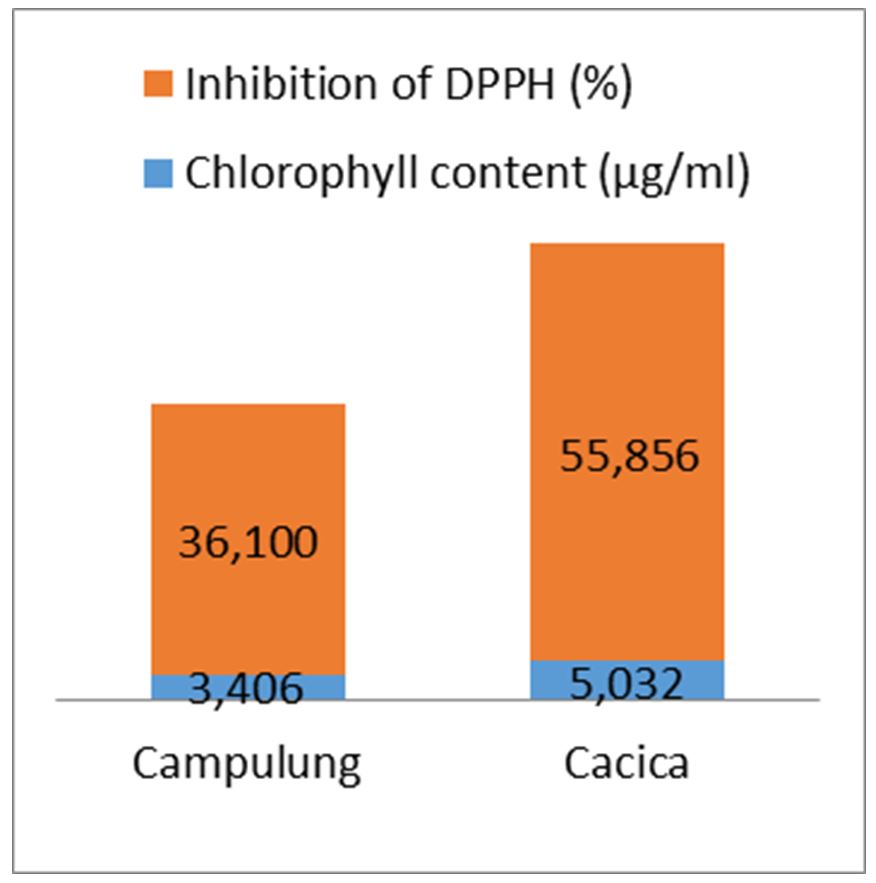
Figure 9 – Variations of total chlorophyll content and antioxidant activity in growing phenophase for Abies alba
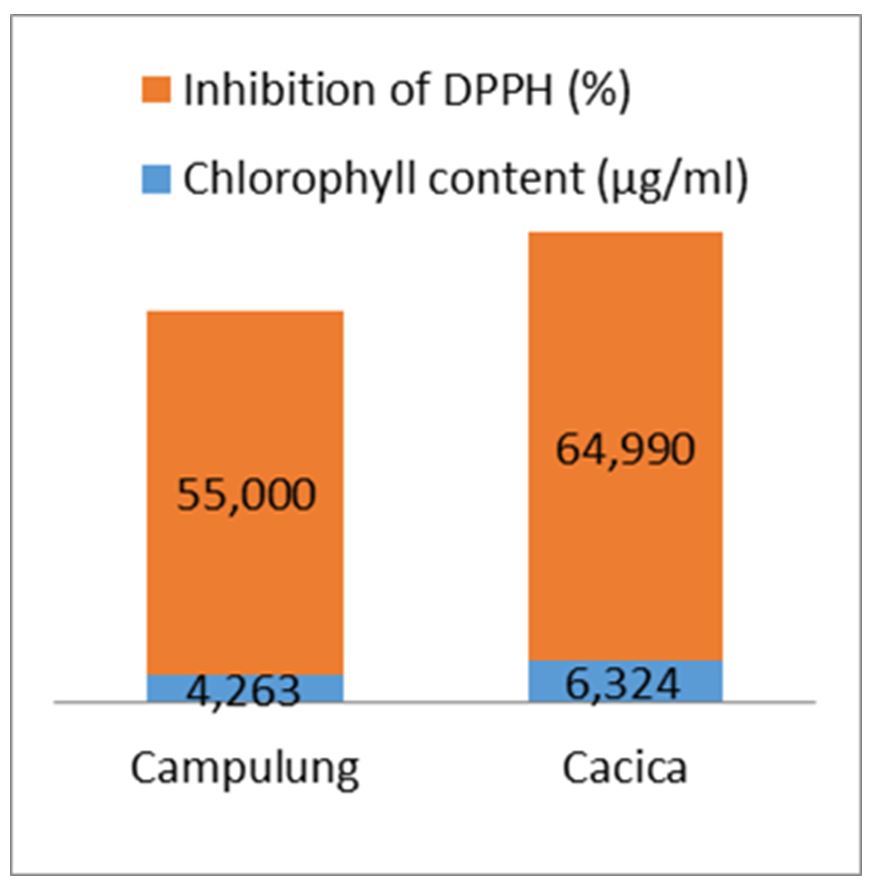
Figure 10 – Variations of total chlorophyll content and antioxidant activity in flowering phenophase for Abies alba
Nepeta pannonica species had a different evolution of chlorophyll content and antioxidant activity. The chlorophyll amount determined in the growing phenophase was greater than the one from flowering phenophase. However, the antioxidant activity was direct proportional with the total chlorophyll amount.
Therefore, acetone extracts from Nepeta pannonica plants collected from Câmpulung and Cacica areas had a smaller chlorophyll content and lower antioxidant activity in flowering phenophase than in growing pheno-phase. In the growing phenophase values was smaller for plants from Câmpulung area than for ones from Cacica area, but during flowering phenophases they were greater (Figs. 11 and 12).
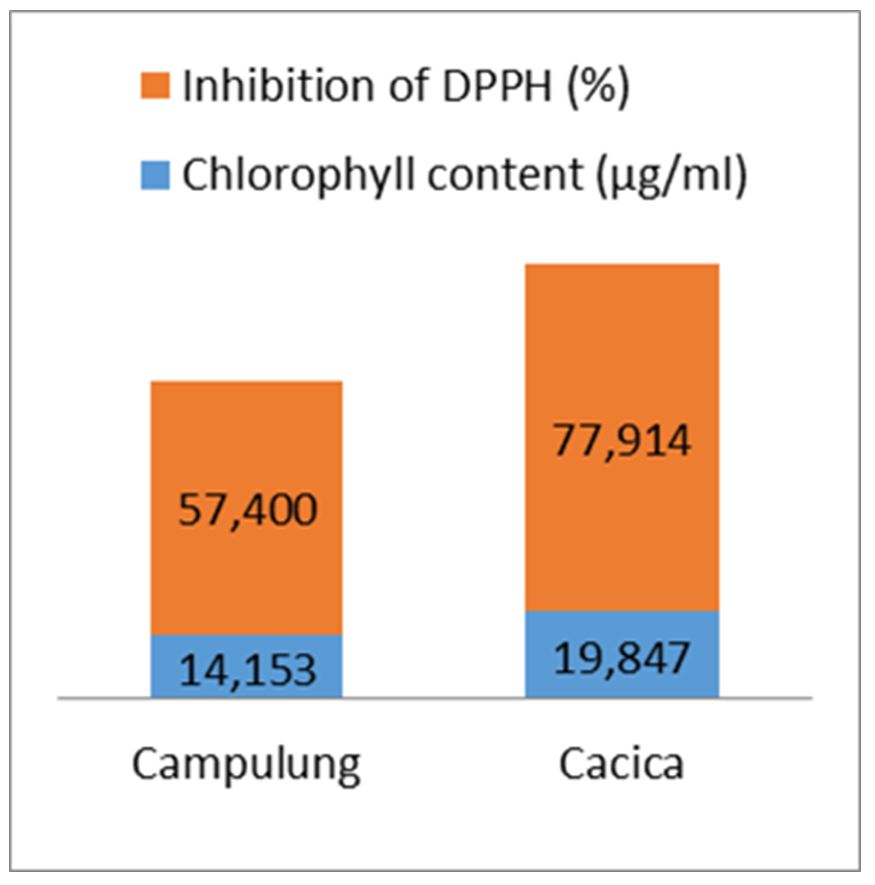
Figure 11 – Variations of total chlorophyll content and antioxidant activity in growing phenophase for Nepeta pannonica
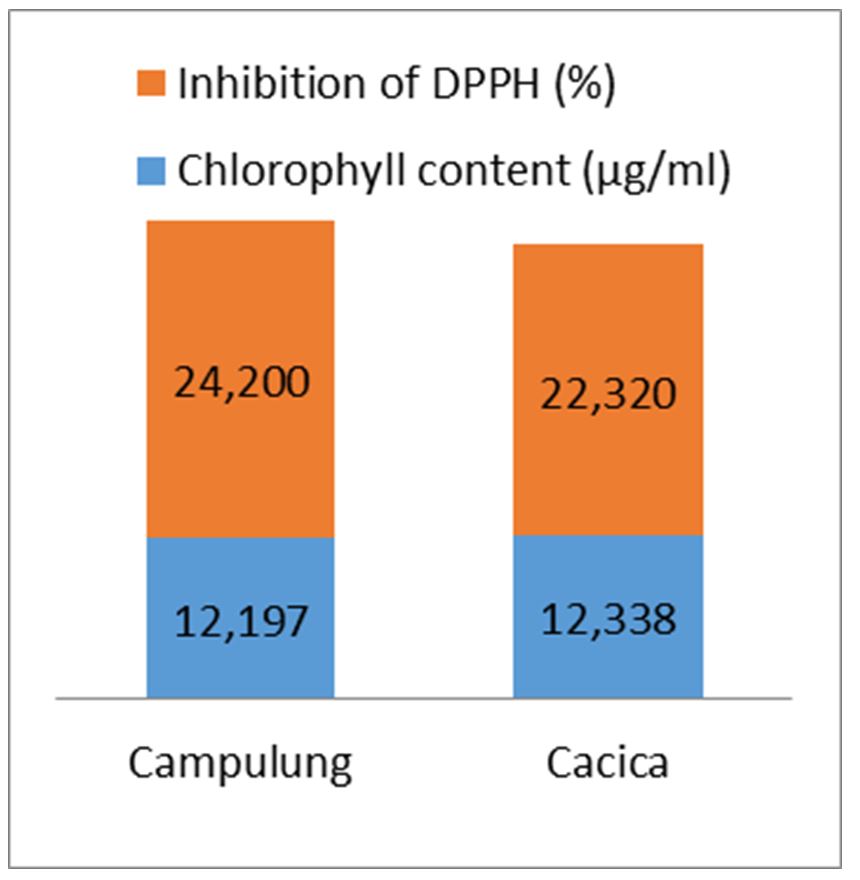
Figure 12 – Variations of total chlorophyll content and antioxidant activity in flowering phenophase for Nepeta pannonica
CONCLUSION
Environmental conditions of the harvest area have a direct influence on chlorophyll and antioxidant content of plants. Another factor that influences the content of chlorophyll and antioxidants is the species.
The highest chlorophyll content was registered in case of extracts obtained from Nepeta pannonica, harvested in growing phenophase. Abies alba had a ascending evolution of chlorophyll and antioxidants amount during growing and flowering, while Nepeta pannonica behave inversely. There was observed a connection between chlorophyll and antioxidant content of plants, quantities being direct proportional at all plant extracts, obtained from both species.
REFERENCES
Belletti, P., Ferrazzini, D., Ducci, F., De Rogatis, A. & Mucciarelli, M. (2017). Genetic diversity of Italian populations of Abies alba. Dendrobiology, 77, 147-159, DOI: 10.12657/denbio.077.012
Bourrel, C., Perrineau, F., Michel, G. & Bessiere, J.M. (1993). Catnip (Nepeta cataria L.) essential oil: analysis of chemical constituents, bacteriostatic and fungistatic properties. J.Essent. Oil Res., 5(2): 159-167, DOI: 10.1080/10412905. 1993.9698195
Brand-Williams, W., Cuvelier, M.E. & Berset, C. (1995). Use of free radical method to evaluate antioxidant activity. LWT-Food Sci.Technol., 28(1): 25-30, DOI: 10.1016/S0023-6438(95)80008-5
Dirmenci, T., Yildiz, B. & Tümen, G. (2004). Threatened categories of four Nepeta L. (Lamiaceae) species endemic to the East Anatolia. Turk.J.Bot., 28: 221-226.
Kaya, A., Demirci, B. & Baser, K.H.C. (2007). Micromorphology of glandular trichomes of Nepeta congesta Fisch & Mey. var. congesta (Lamiaceae) and chemical analysis of the essential oils. S.Afr.J.Bot., 73(1): 29-34.
Kris-Etherton, P.M., Hecker, K.D., Bonanome A., Coval S.M., Binkoski, A.E., Hilpert K.F., Griel, A.E. & Etherton T.D. (2002). Bioactive compounds in foods: their role in the prevention of cardiovascular disease and cancer. Am.J.Med., 113(9) (Suppl. 2): 71-88, DOI: 10.1016/S0002-9343(01)0099 5-0
Miceli, N., Taviano, M.F., Giuffrida, D., Trovato, A., Tzakou, O. & Galati, E.M., (2005). Anti-inflammatory activity of extract and fractions from Nepeta sibthorpii Bentham. J. Ethnopharmacol., 97(2): 261-266, DOI: 10.1016/j.jep.2004.11.024
Sattara, A., Bankova, V., Kujumgiev, A., Galabov, A., Ignatova, A., Todorova, C. & Popov, S. (1995). Chemical composition and biological activity of leaf exudates from some Lamiaceae plants. Die Pharmazie, 50(1): 62-65.
Senevirathne, M., Kim, S.-H., Siriwardhana N., Ha, J.-H., Lee, K.-W. & Jeon Y.-J. (2006). Antioxidant potential of Ecklonia cava on reactive oxygen species scavenging, metal chelating, reducing power and lipid peroxidation inhibition. Food Sci.Technol., 12: 27-38, DOI: 10.1177/1082013206062422
Sheikh, A.Q., Pandit A.K. & Ganai, B.A. (2017). Seasonal variation in chlorophyll content of some selected plant species of Yousmarg grassland ecosystem. Asian J.Plant Sci.Res., 7(2):33-36.
Tavčar Benković, E.T., Žigon, D., Mihailović, V., Petelinc, T., Jamnik, P. & Kreft, S. (2017). Identification, in vitro and in vivo antioxidant activity, and gastrointestinal stability of lignans from silver fir (Abies alba) wood extract. J. Wood Chem. Technol., 37: 467-477, DOI: 10.1080/0277 3813.2017.1340958
Topcu, G. & Ulubelen, A. (2007). Structure elucidation of organic compounds from natural sources using 1D and 2D NMR techniques. J.Mol.Struct., 834-836: 57-73, DOI: 10.1016/j.molstruc.2006.12.001
Yang, X.-W., Li, S.-M., Shen, Y.-H. & Zhang, W.-D. (2008). Phytochemical and biological studies of Abies species. Chem.Biodivers., 5, 56-81, DOI: 10.1002/cbdv.200890015

